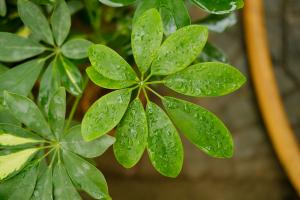How to Fertilize Large Potted Plants for Patio
If you have large potted plants on your patio, they require a special type of care to keep them healthy and thriving. One of the essential aspects of plant care is fertilization. Fertilizing your large potted plants is essential to ensure that they have the nutrients they need to grow and stay healthy. In this article, we will discuss some simple steps to help you fertilize your large potted plants effectively.
Step 1: Choose the Right Fertilizer
One of the most important things when it comes to fertilizing your large potted plants is selecting the right fertilizer. Different plants require different kinds of fertilizers, so make sure you choose the appropriate one for your plant. You should also consider the type of soil your plant is growing in and the kind of nutrients it needs to thrive.
Generally, there are two types of fertilizers: organic and synthetic. Organic fertilizers are made of natural materials, while synthetic fertilizers are human-made. Organic fertilizers are a great option for those who want to avoid chemical additives. They can help improve soil health and promote the growth of beneficial microbes, which help plants absorb nutrients more efficiently.
Step 2: Apply the Fertilizer
Once you have selected the right fertilizer for your potted plant, it's time to apply it. The best way to apply fertilizer is to do it gradually throughout the growing season. This allows the plant to absorb nutrients as it needs them. It's crucial to read the instructions on the fertilizer packaging carefully to ensure you're applying the appropriate amount and at the right time.
Some fertilizers require dilution with water before application, while others can be applied directly to the soil. If you're unsure how to apply the fertilizer, seek advice from a professional or a gardening expert.
Step 3: Water Your Plants After Fertilization
After fertilizing your potted plants, you should water them. Watering allows the nutrients to penetrate the soil and reach the roots of the plant, where they are needed the most. Watering also helps flush out any excess fertilizer that may be damaging to your plants.
It's best to water your plants early in the day before the sun is at its peak, as watering in the evening can lead to fungal growth. Make sure to water your plants deeply, so the water reaches the roots and helps keep the soil moist.
Step 4: Monitor Your Plant's Growth
Regular monitoring of your potted plants after fertilization is essential. Observe how your plants respond to the fertilizer and see if they're growing better or worse. If the plants show any signs of stress, such as browning leaves or slowed growth, adjust the fertilizer application accordingly.
It's essential to avoid over-fertilizing your plants as this can lead to chemical burn or other issues. Be sure to follow the instructions on the fertilizer package carefully.
Conclusion
Fertilizing your large potted plants is essential to ensure they stay healthy, grow, and thrive. Remember to choose the right fertilizer, apply it gradually throughout the growing season, water your plants thoroughly after fertilization, and monitor your plant's growth for any changes or signs of stress. By following these simple steps, you can keep your large potted plants healthy and beautiful all-year-round.

 how many times do yo...
how many times do yo... how many planted tre...
how many planted tre... how many pine trees ...
how many pine trees ... how many pecan trees...
how many pecan trees... how many plants comp...
how many plants comp... how many plants can ...
how many plants can ... how many plants and ...
how many plants and ... how many pepper plan...
how many pepper plan...






























